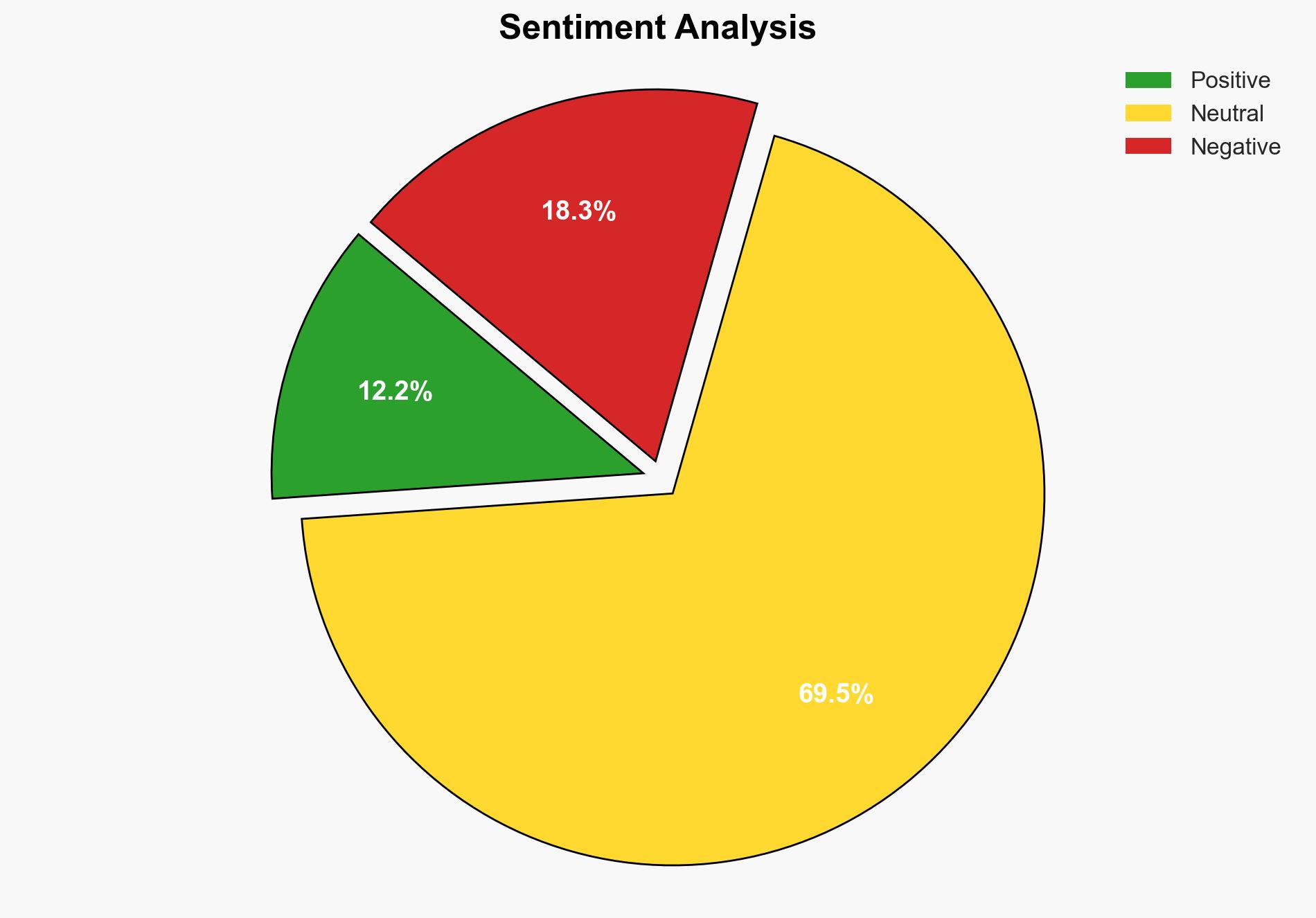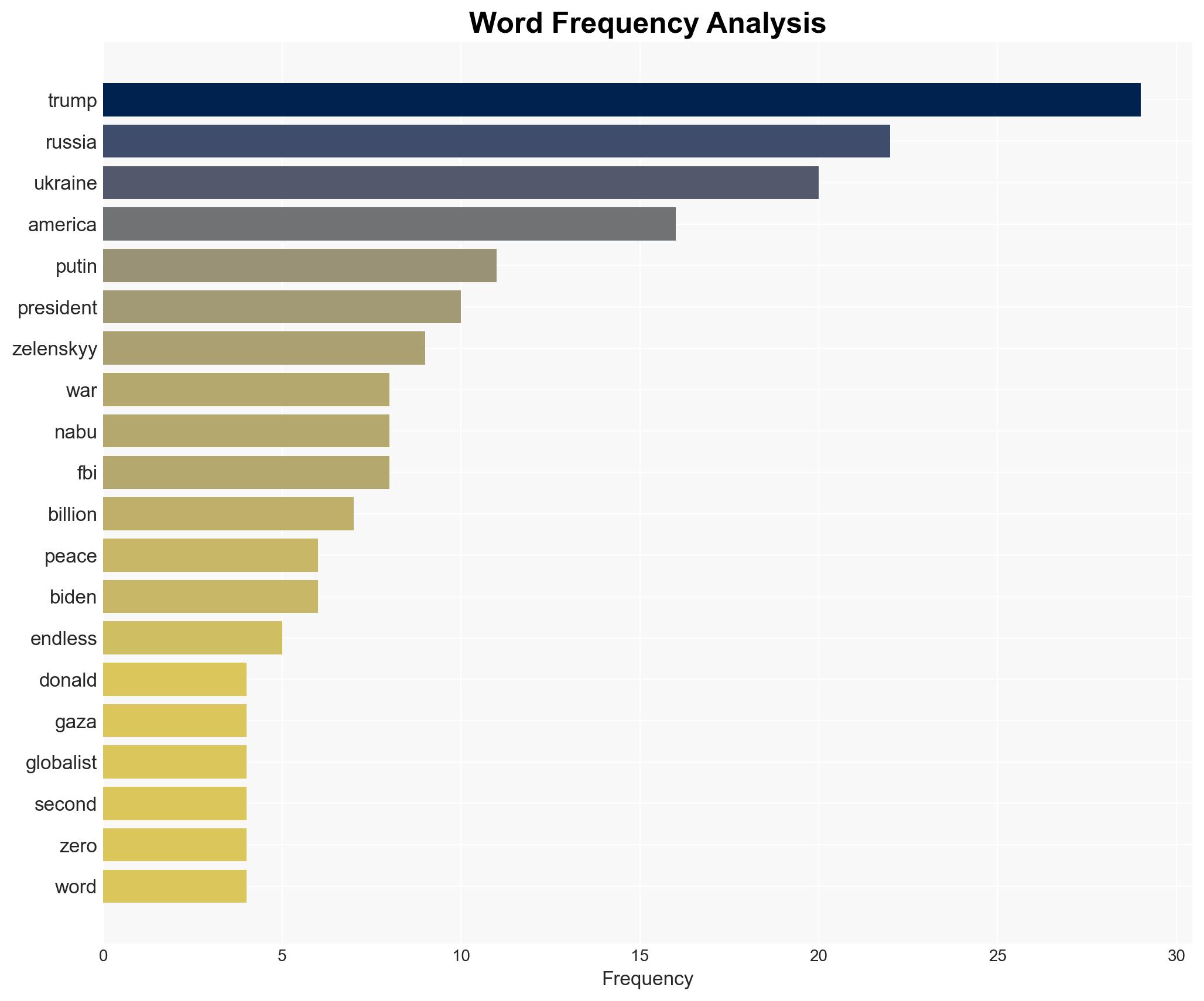Trump is committed to achieving peace in Ukraine and he is very serious – Americanthinker.com
Published on: 2025-11-20
AI-powered OSINT brief from verified open sources. Automated NLP signal extraction with human verification. See our Methodology and Why WorldWideWatchers.
Intelligence Report:
1. BLUF (Bottom Line Up Front)
With a moderate confidence level, the analysis suggests that while former President Donald Trump may be committed to achieving peace in Ukraine, the feasibility and sincerity of such efforts are questionable due to geopolitical complexities and potential biases in the source material. Strategic recommendations include monitoring diplomatic engagements and preparing for shifts in U.S. foreign policy approaches.
2. Competing Hypotheses
Hypothesis 1: Donald Trump is genuinely committed to achieving peace in Ukraine through assertive diplomacy and economic leverage.
Hypothesis 2: The narrative of Trump’s commitment to peace is primarily a political maneuver aimed at differentiating his potential future leadership from current and past administrations, with limited practical implementation.
Hypothesis 2 is more likely due to the lack of concrete evidence supporting the effectiveness of proposed measures and the potential bias in the source material.
3. Key Assumptions and Red Flags
Assumptions include the belief that economic sanctions and diplomatic pressure alone can compel Russia to negotiate peace. Red flags include the source’s potential bias towards Trump and the lack of independent verification of claims regarding corruption and embezzlement in Ukraine. Deception indicators may involve overstating Trump’s influence or underestimating the complexities of international diplomacy.
4. Implications and Strategic Risks
The pursuit of peace in Ukraine under Trump’s leadership could lead to shifts in U.S.-Russia relations, impacting global alliances and economic sanctions regimes. Political risks include potential backlash from allies and domestic stakeholders. Cyber and informational threats may arise from increased propaganda or misinformation campaigns. Economic risks involve potential disruptions in global energy markets.
5. Recommendations and Outlook
- Monitor diplomatic engagements and rhetoric from key stakeholders, including Trump, Putin, and Zelenskyy.
- Prepare for potential shifts in U.S. foreign policy and its impact on international alliances.
- Best-case scenario: Successful diplomatic resolution leading to a stable peace agreement.
- Worst-case scenario: Escalation of conflict due to failed negotiations or increased geopolitical tensions.
- Most-likely scenario: Continued stalemate with intermittent diplomatic efforts and ongoing economic sanctions.
6. Key Individuals and Entities
Donald Trump, Vladimir Putin, Volodymyr Zelenskyy, National Anti-Corruption Bureau of Ukraine (NABU), Federal Bureau of Investigation (FBI).
7. Thematic Tags
Counter-Terrorism, Geopolitics, Diplomacy, Economic Sanctions, U.S.-Russia Relations
Structured Analytic Techniques Applied
- ACH 2.0: Reconstruct likely threat actor intentions via hypothesis testing and structured refutation.
- Indicators Development: Track radicalization signals and propaganda patterns to anticipate operational planning.
- Narrative Pattern Analysis: Analyze spread/adaptation of ideological narratives for recruitment/incitement signals.
Explore more:
Counter-Terrorism Briefs ·
Daily Summary ·
Support us





